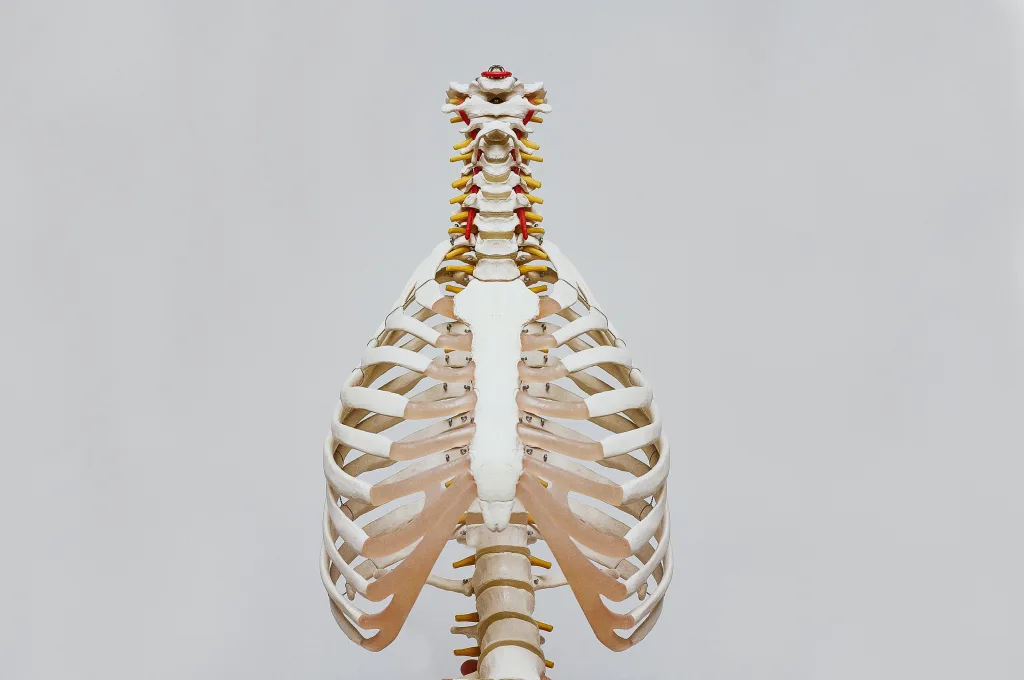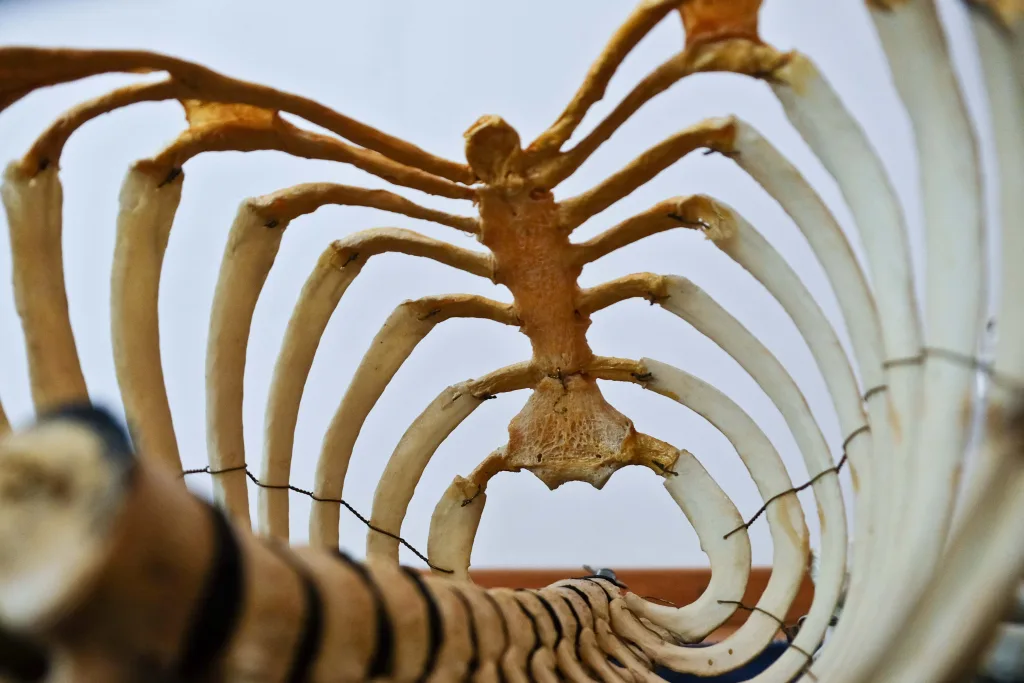The ribcage, also known as the thoracic cage, is an essential part of the human skeletal system that protects and supports the vital organs in the chest, such as the heart and lungs. It consists of 12 pairs of ribs, connecting to the spine at the back and the sternum (breastbone) at the front. While the size and shape of the ribcage can vary from person to person, some individuals may wonder why their ribcage appears larger than average.
First and foremost, it’s important to note that the size of the ribcage is primarily determined by genetics and individual body structure. Just like other body parts, the ribcage can come in different sizes and proportions, which are unique to each person. Some individuals may naturally have a larger ribcage, while others may have a smaller one.
However, in some cases, a larger ribcage may be the result of certain medical conditions or lifestyle factors. One common cause is a condition known as barrel chest. This occurs when the lungs become hyperinflated, causing the ribcage to stay expanded for an extended period. Barrel chest is often associated with chronic lung conditions such as chronic obstructive pulmonary disease (COPD), emphysema, or asthma. In these conditions, the lungs have to work harder to breathe, leading to overinflation and an enlarged appearance of the ribcage.
Other medical conditions that can contribute to a larger ribcage include Marfan syndrome, a genetic disorder that affects connective tissues and can cause long limbs and a tall stature. Additionally, certain hormonal imbalances or endocrine disorders can affect bone development and potentially lead to a larger ribcage.
It’s worth noting that the accumulation of excess fat in the torso area can also give the illusion of a larger ribcage. However, it’s important to understand that bones themselves do not grow or expand due to obesity. Excess fat is typically stored underneath the skin, not within the ribcage where the vital organs are located.
In some cases, an uneven or protruding ribcage may be due to muscle weakness. The abdominal muscles play a significant role in supporting and holding the ribcage in place. If the muscles on one side of the body are weaker, it can cause one side of the ribcage to stick out or sit unevenly.
While there is no way to reduce the size of the ribcage itself, individuals who are concerned about the appearance of a larger ribcage can explore options to improve overall body composition. Regular exercise, including strength training and core exercises, can help strengthen the abdominal muscles and improve posture, which may help reduce the prominence of an uneven ribcage. It’s important to consult with a healthcare professional or a qualified trainer before starting any exercise program to ensure it is safe and appropriate for individual needs.
The size and shape of the ribcage can vary among individuals, primarily due to genetics and body structure. While some medical conditions or lifestyle factors can contribute to a larger ribcage, it’s important to remember that bones themselves do not grow or expand due to obesity. If you have concerns about the appearance of your ribcage or suspect an underlying medical condition, it’s always best to consult with a healthcare professional for a proper evaluation and advice.
What Causes A Large Rib Cage?
A large rib cage can be caused by several factors. One possible cause is a condition called barrel chest. Barrel chest occurs when the lungs become hyperinflated with air, causing the rib cage to remain expanded for an extended period of time. This can result in the appearance of a larger rib cage.
Barrel chest is most commonly seen in individuals with chronic lung conditions, such as chronic obstructive pulmonary disease (COPD) or emphysema. These conditions cause the air sacs in the lungs to lose their elasticity, making it difficult for air to be expelled during exhalation. As a result, the lungs become overfilled with air, leading to the barrel chest appearance.
However, it’s important to note that a large rib cage can also be caused by other factors. Some individuals may naturally have a larger rib cage due to genetic factors or differences in body structure. Additionally, certain medical conditions such as scoliosis (abnormal curvature of the spine) or gigantism (excessive growth hormone production) can also contribute to a larger rib cage.
A large rib cage can be caused by various factors. Barrel chest, which occurs due to hyperinflation of the lungs, is a common cause seen in individuals with chronic lung conditions. However, genetic factors, body structure, and certain medical conditions can also contribute to the appearance of a larger rib cage.

How Can I Reduce My Rib Cage Size?
Reducing the size of the rib cage is not possible through any natural or medical means. The rib cage is composed of a set of bones that protect the vital organs and provide structural support to the upper body. As such, its size is genetically determined and cannot be altered.
Although some individuals may seek to achieve a smaller-looking rib cage, it is important to note that any methods claiming to do so are largely ineffective and potentially harmful. Corsets and binding techniques have been historically used to create the illusion of a smaller waistline and rib cage, particularly during the Victorian era. However, these practices do not result in any permanent changes to the size of the rib cage.
Moreover, corsets and binding can have negative consequences for one’s health when done incorrectly or excessively. These practices can restrict breathing and movement, leading to discomfort, difficulty in performing daily activities, and potentially causing damage to the internal organs. It is essential to prioritize health and well-being over achieving a specific body shape or size.
If one wishes to create the appearance of a smaller upper body, alternative options such as proper posture, strength training exercises to tone the muscles, and wearing clothing that flatters the body shape may be more suitable choices. However, it is important to embrace and accept one’s natural body shape and size, as everyone’s anatomy is unique and beautiful in its own way.
Is It Normal For Your Ribcage To Stick Out?
It is normal for the rib cage to have a slight protrusion or unevenness in some individuals. The rib cage is naturally curved and can vary in shape and size from person to person. This variation is often due to factors such as genetics, body composition, and posture.
In some cases, a protruding or uneven rib cage may be more noticeable or pronounced. This can occur due to a variety of reasons, including:
1. Muscle imbalances: Weakness or imbalance in the muscles surrounding the rib cage, such as the abdominal muscles, can cause one side of the rib cage to stick out more than the other.
2. Scoliosis: Scoliosis is a condition characterized by an abnormal curvature of the spine. In some cases, it can cause the rib cage to appear uneven or protrude on one side.
3. Injury or trauma: A previous injury or trauma to the chest or rib area can lead to changes in the rib cage’s shape or position.
4. Structural abnormalities: Rarely, certain structural abnormalities or conditions affecting the bones or connective tissues of the rib cage can cause it to stick out or appear uneven.
If you are concerned about the appearance or discomfort caused by an uneven or protruding rib cage, it is recommended to consult with a healthcare professional. They can evaluate your specific situation, provide a proper diagnosis, and recommend appropriate treatment options if necessary.
Does Being Fat Make Your Rib Cage Bigger?
Being fat does not make your rib cage bigger. The size and shape of your rib cage are determined by your skeletal structure and genetics. Your rib cage is composed of bones, which do not grow or expand due to an increase in body fat.
Excess body fat is typically stored underneath the skin and is distributed throughout the body. This can result in a padding of fat developing over your ribs, particularly in the torso area. However, this fat accumulation occurs outside the rib cage, not inside where your vital organs such as the lungs and heart are located.

Conclusion
The ribcage is a vital part of the human anatomy that protects and supports important organs such as the lungs and heart. While it is not possible to reduce the size of the ribcage, certain conditions and diseases can cause it to appear larger or uneven. Barrel chest, for example, occurs when the lungs become hyperinflated and keep the ribcage expanded for an extended period of time. This is commonly seen in individuals with chronic lung conditions. Additionally, muscle weakness in the abdominal area can cause one side of the ribcage to stick out or sit unevenly. It is important to note that corsets or binding techniques may give the illusion of a smaller upper body, but they do not lead to permanent changes in the size of the ribcage. Lastly, it is important to understand that excess fat accumulates underneath the skin of the torso, not inside the ribcage itself. maintaining a healthy lifestyle and seeking medical attention for any concerning changes in the ribcage is crucial for overall well-being.
